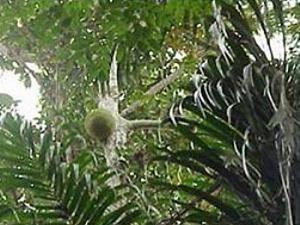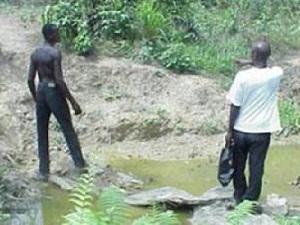Frank Godwin
The Buan community forest in the lowland humid rainforest zone of the Niger Delta is under threat as many of the forest-protective traditional practices fall into disuse. The project team will work with the community to identify and strengthen traditional methods of monitoring resource use and conservation of the forest

Trecule africana.
Participatory Rural Appraisal (PRA) in Ogbogolo Community. Assessment of baseline social conditions of extant forest communities is a prerequisite for a successful forest conservation.

The Buan community forest is one of the very few significant forests remaining within the lowland humid rainforest zone of the Niger Delta. However, current indications show that the forest is under increasing levels of threats as many of the forest-protective traditional practices fall into disuse.
The project team will work with the community to identify and strengthen traditional systems and methods of monitoring of resource use and conservation of forest resources, using the following techniques:
Participatory Rural Appraisal (PRA) and, training in institutional organization and community Natural Resource Management (NRM).
Community resource mapping using oral history, indigenous knowledge, sketch maps, and a global positioning system (GPS). And use of a geographic information system (GIS) to overlay generated information with baseline topographical map in order to identify management alternatives.
Development and documentation of forest resource management principles and guidelines for resource utilization and conservation in Buan community forest.
Forest Resource Mapping in Ogbogolo Sector of Upper Orashi Forests: Identification of toponyms with the assistance of community facilitators.
Project achievements shall be communicated, as a commendable example, to increasing number of other forest communities, policy makers at various levels of government, donor agencies, forest conservationist, etc, who shall be reached through our monthly bulletin, ECO-REVIEW. This will greatly increase the potentials for extending and replicating (elsewhere) this example.